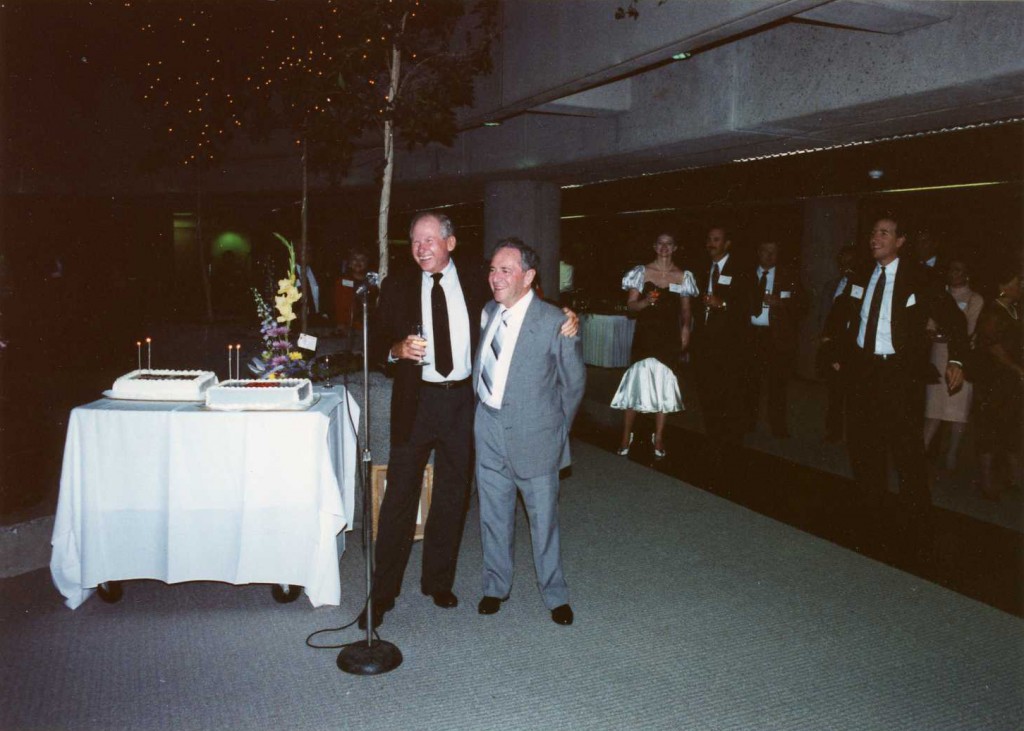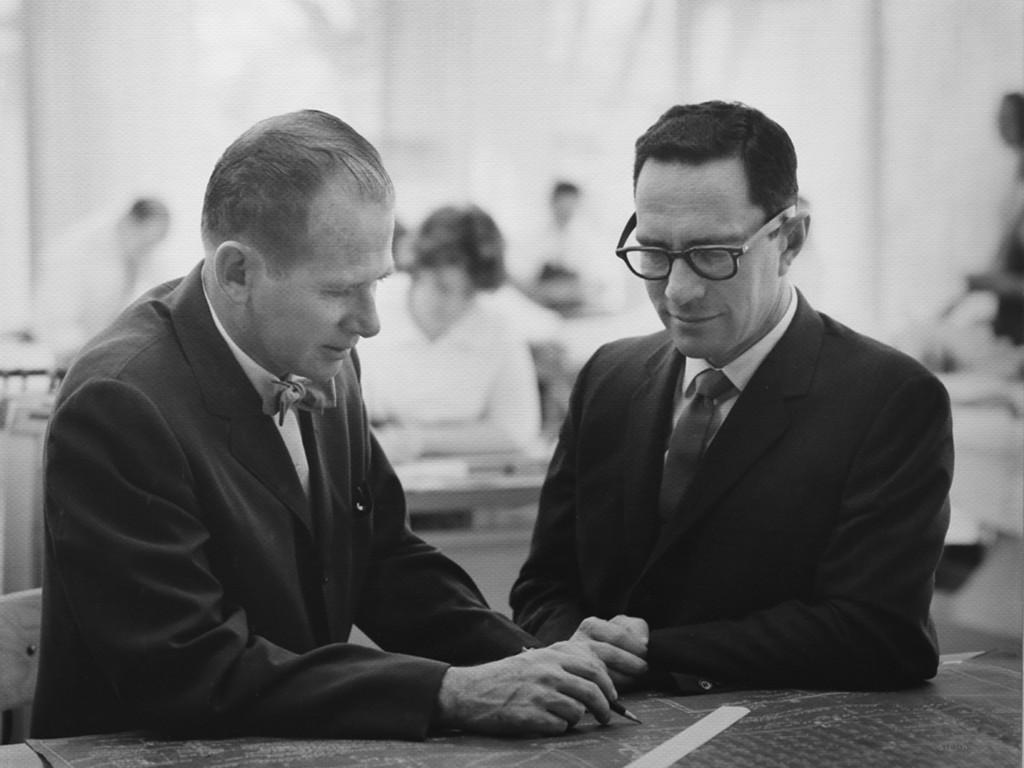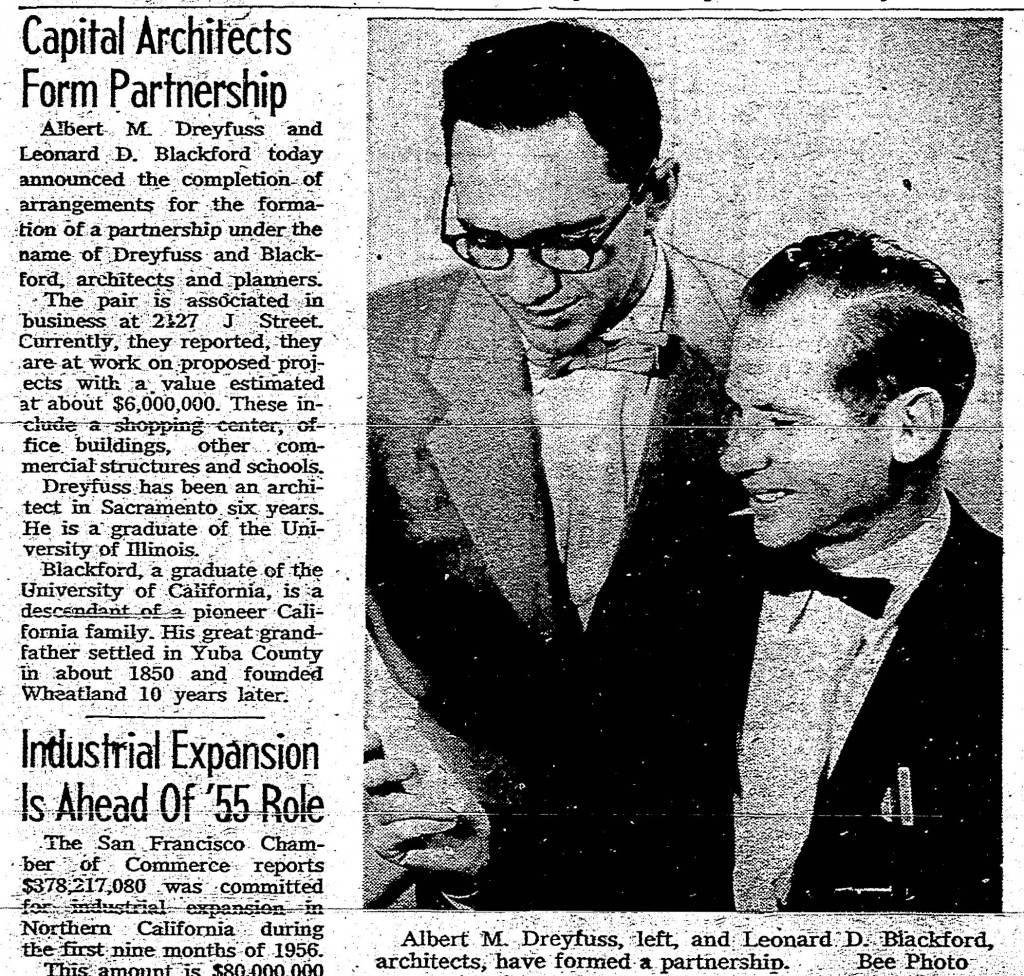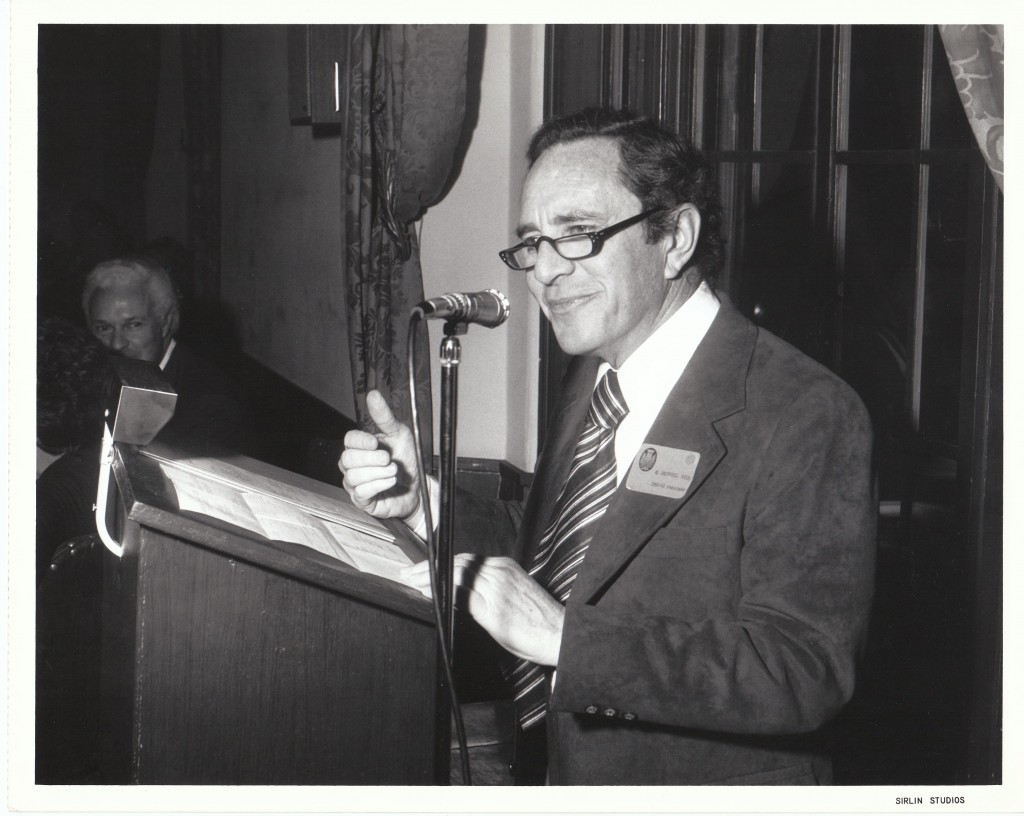Part 3: Remembering Al
Raquel Urbani
February 13, 2018
This is the last of a three-part series about the architect, Albert M. Dreyfuss, who passed away Thursday, December 21, 2017. He was 97. Although largely credited with the business side of our firm, Albert (Al) Dreyfuss was a diverse, driven and accomplished architect. Part 1 of this series is about his and our firm’s beginning, and his early school projects including three brand-new concepts in educational building design. Part 2 covers Al’s early residential work and his planning efforts in and around the Capitol.
A Successful Partnership
In between his planning and residential work, Al focused on bringing in more business for the handful of employees that worked for him. Len Blackford had started working for Al in 1953, shortly after leaving the State of California, Division of State Architecture, which was shortly after Al had left there too. The pair did not know each other then, but first met in 1952, while they were neighbors. At work, Al quickly recognized Len’s design acumen and passed along the Design and Construction Administration responsibility for the new schools he was designing in the area.
After the pair won the SMUD commission, Al made Len a full partner in 1956, and they conducted business together for next four decades as Dreyfuss & Blackford Architects & Planners.
Together Dreyfuss & Blackford shaped the Sacramento region. Many of the modernist structures in the area were planned and designed by these two men and a small army of architects and drafters working for them.

Len Blackford (left) and Albert Dreyfuss (right) in 1995 at Al’s retirement party at Lincoln Plaza, with John Webre in the background.
Both men retired in the 1990s, officially handing the business over to John Webre in 1995. The pair always remained friends and each continued to come by the office monthly – well into their 90’s – to visit with us.
Community Service
It would be an injustice to Al’s legacy to not mention his public and community service, and his philanthropy efforts. As a result, many of our staff have served on boards and local community groups because of the example he set.
Some of the areas he influenced for the profession of architecture were on a larger scale, at the State level.
Defining an Architect
A member of the American Institute of Architects (AIA) since 1947, Al served as president of the local Central Valley Chapter (1959-60) and was the president of the California Council (1963), which is the State-level chapter. As president of California Council, Al directed the committee for the State of California Architectural Practice Act and presented the Act to the California Legislature, following it through to obtaining passage by the Legislature and Governor in 1963. For the first time, this Act defined an ‘Architect’ and provided a legal framework for California licensing practices. Also during his tenure at the California Council, he assisted the in defense of the California Education Master Plan, which for the first time, allowed private architects to participate in the design of state college buildings. Previously only staff at the Office of the State Architect were allowed to design these campus buildings.
Directing the Licensure Path
In 1965, Al became the first Sacramento architect to be elected president of the State Board of Architectural Examiners. This board is the governing body for architectural licensure in the State of California. It oversees the many examinations and licensing requirements for architects and those in process of achieving their license to practice in the State. He also served on the National Council of Architectural Registration Boards from 1964-1967 and the National Architectural Accrediting Board in 1967.
In 1967, Al became the first Sacramento architect awarded a Fellowship to the American Institute of Architects (AIA), the highest honor the organization can bestow on a member for their exemplary service to the profession and their community.
Natural Resources Advocate
Always active in local and statewide planning and conservation organizations, Al Dreyfuss was a force to be reckoned with when it came to citizen committees and fund drives. Most notably, in 1974, he served as co-Chairman of a committee, called “Sacramentans for Clean Water” in which he was able to obtain approval of a general obligation bond issued in the amount of $75 million, to ensure funds would be available to finance the local share of costs for the project.
Al was a founding member and served on the Board of Directors of the American River Parkway Foundation (ARPF) since 1983. He eventually became president and was an avid supporter of preservation and education of the natural resources of the Parkway. He focused largely on fundraising for land acquisition to add to the land encompassed by the Parkway, so it could be preserved and used for educational tours at the Effie Yeaw Nature Center. He was a lifelong member and served into his 80s with the Foundation.
Also, in addition to his four grandchildren, Al created college accounts for at least nine other children not related to him, because he valued education so highly. We miss seeing Al come by our office to say hi, but we hope this series about his life inspires, and his legacy lives on.


